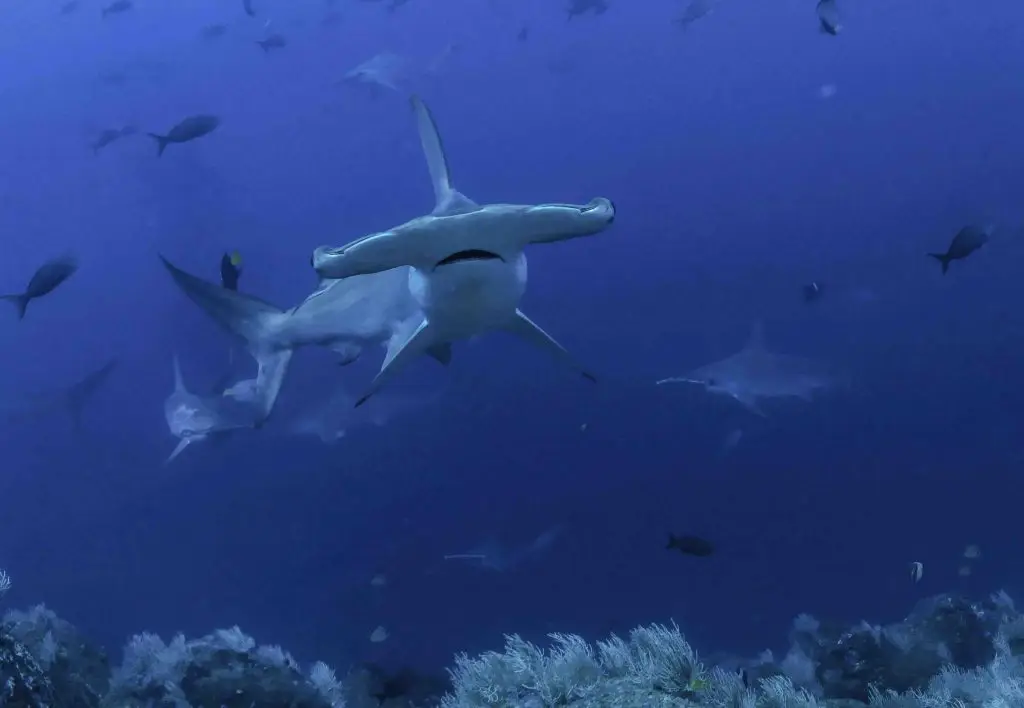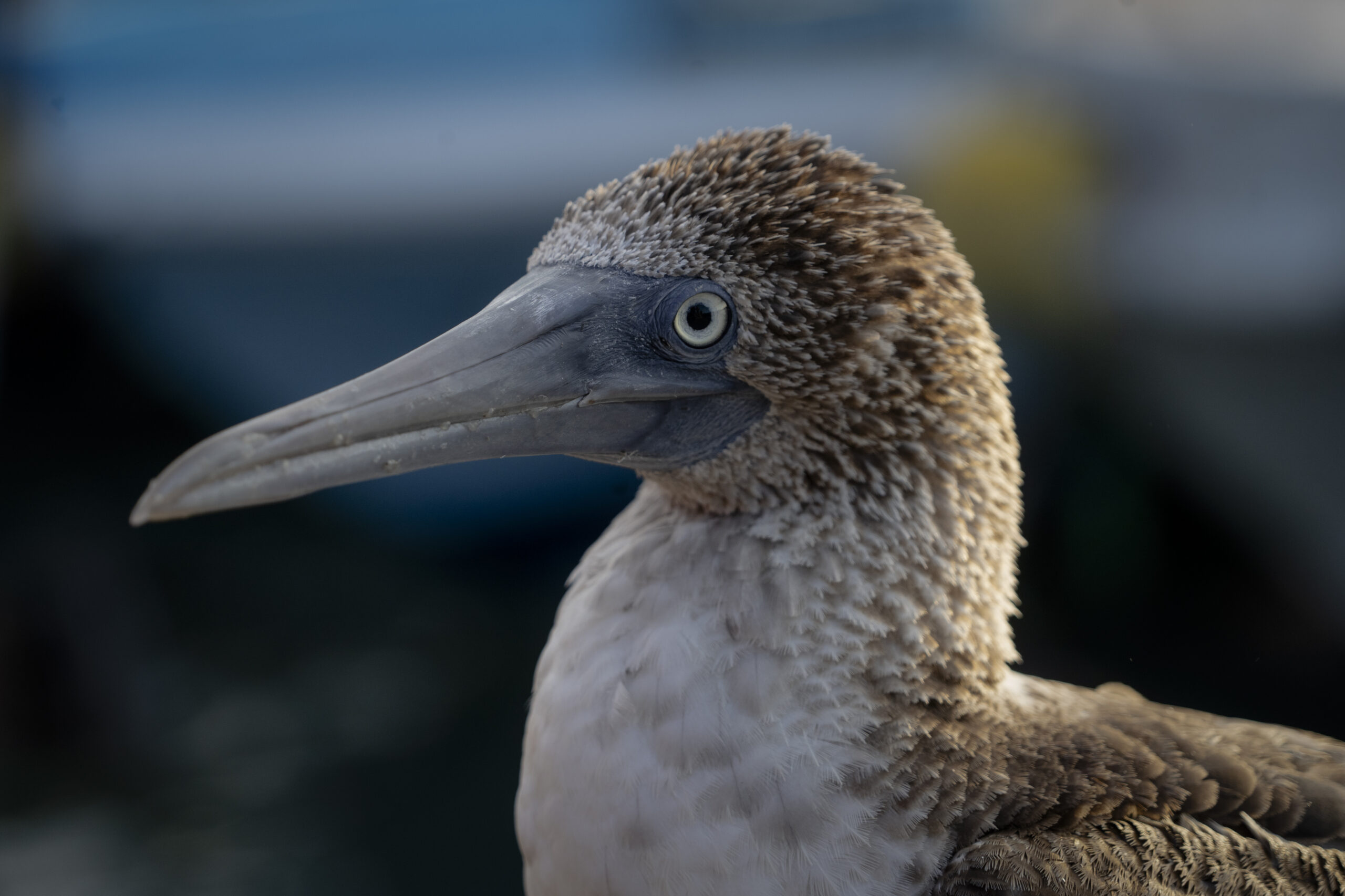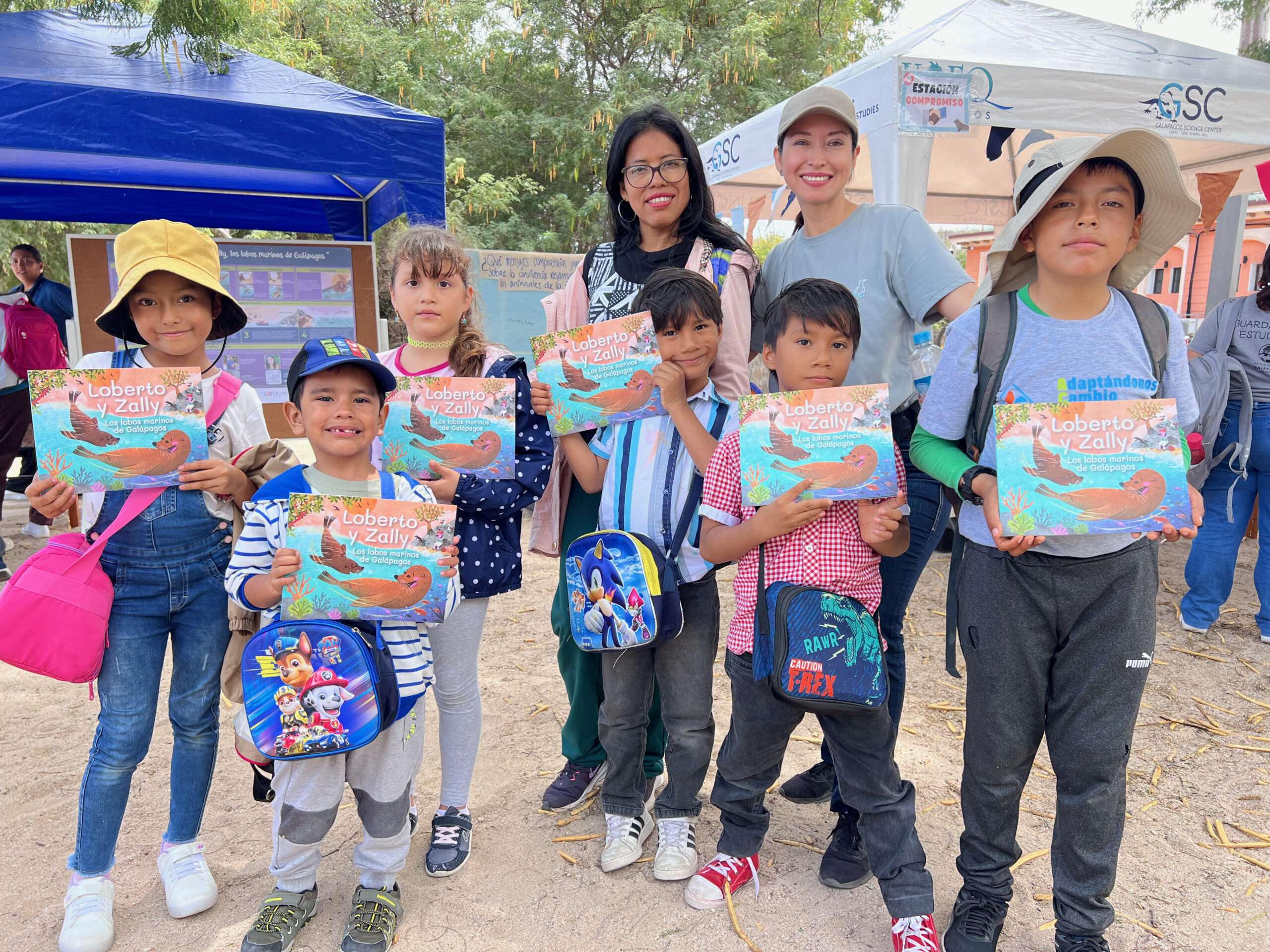The scalloped hammerhead shark (Sphyrna lewini) is one of the most iconic marine species across the Eastern Tropical Pacific (ETP), yet little is still known about its reproductive biology and the origin of their nursery areas, despite a continuous global decline in their populations. Understanding the origin of shark nurseries is a complex task; however, it is known that the obtention of resources in the first stages of life of placental sharks occurs through maternal reminiscence, thus it is possible to infer the origin of the energy that neonates accumulate during their gestation. In this study we assessed the ecological connectivity and nursery ground use by undertaking a stable isotope analysis of carbon (δ13C) and nitrogen (δ15N) in skin samples of neonates S. lewini across much of their distribution in the ETP, including the Galapagos Marine Reserve (GMR). Our isotopic mixing models revealed that the S. lewini neonates found in the GMR, have isotopic information similar to adult females inhabit in the Galapagos archipelago, suggesting that they are direct descendants of the females that inhabit the GMR. While neonates found off the continental coasts of Ecuador and Panama have isotopic signatures like those of adult females inhabiting several locations across the ETP. This work provides insight into the origin of nursery areas used by adult S. lewini that aggregate in large numbers across oceanic islands of the ETP, highlighting the value of isotopic models to generate useful information for the conservation of sharks.
Read the article in the link: www.frontiersin.org/articles/10.3389/fmars.2023.1288770






